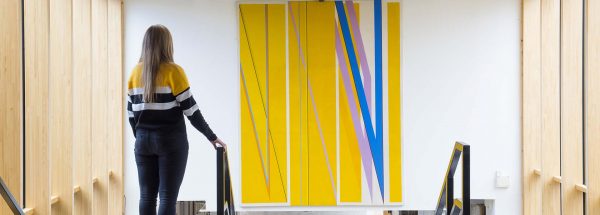From church ruins to hidden art, skeletons to sculpture
The University of Stirling’s campus is arguably one of the most beautiful in the world but it also holds some surprising secrets and hidden corners. Here are some unusual, and occasionally bizarre, reasons to explore and enjoy our campus.
Find the sculptures
The campus is rich with sculpture that explores our relationship with landscape, our senses and our inner worlds.
You can follow the Japanese Sculpture Trail which describes the work currently on loan and situated around the campus of two eminent contemporary sculptors Hironori Katagiri and Kate Thomson.
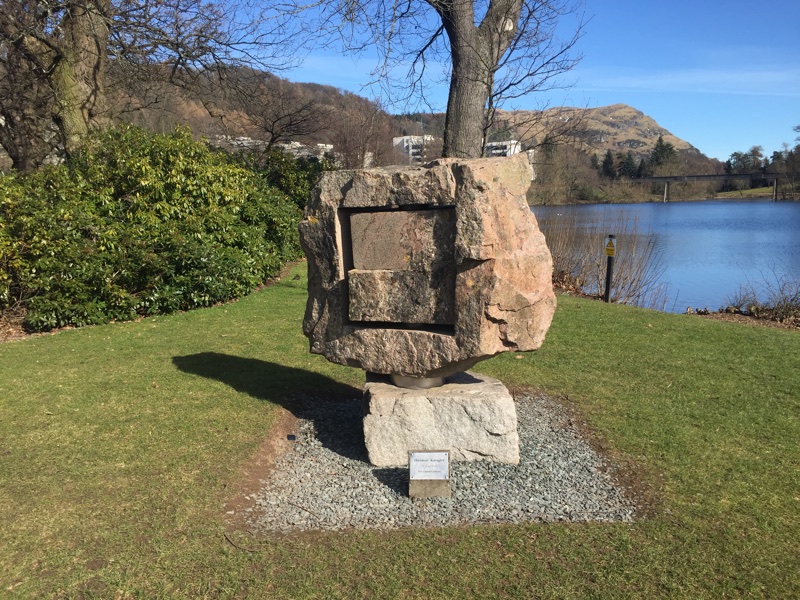
The Garden of Time
Nestled under the Witches Craig, and once known by students as the ‘Secret Garden’, the Garden of Time was founded to celebrate the University’s 50th anniversary in 2017. While the garden is only in its first phase of development, it already provides a lovely, secluded spot for staff and students alike.
The garden blends nature with art and integrates features from the surrounding landscape to explore the passing of time. You can enjoy the labyrinth, an area for wildflowers and a water feature.
Find out more about the Garden of Time.
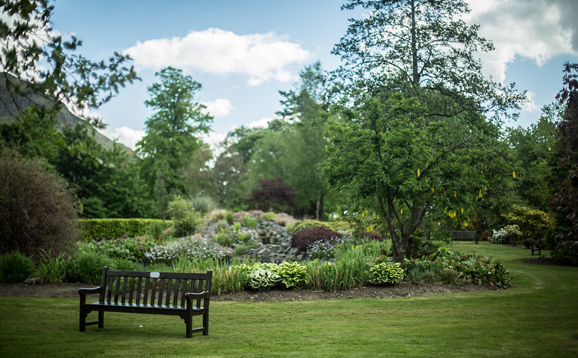
Natural history curiosities
Tucked away down Corridor A of the Cottrell Building are display cabinets full of natural history artefacts provided by the Biological and Environmental Sciences division. Enjoy a fascinating variety of skulls, skeletons, preserved specimens and other anatomical curiosities.

Church ruins and Scottish royalty
Past the Garden of Time and just beyond the Gardens and Grounds area, lies the ruins of the old Logie Kirk. You can find your way through old stone walls and the overgrown remains of an abandoned walled garden or go along the track behind the University walls, below Hermitage Wood, that takes you to the old church.
The church sits at the foot of the Ochil Hills. The church was built in 1805 and has a collection of ancient gravestones. Look out for some that have symbols of mortality such as skulls and crossbones, angels, and hourglasses.
From here you can also start walking the Hillfoots Way, a route based on the ancient King’s Highway that dates to the 1300s. The route may have been used for royal travel between Stirling Castle and Falkland Palace in the 16th century.
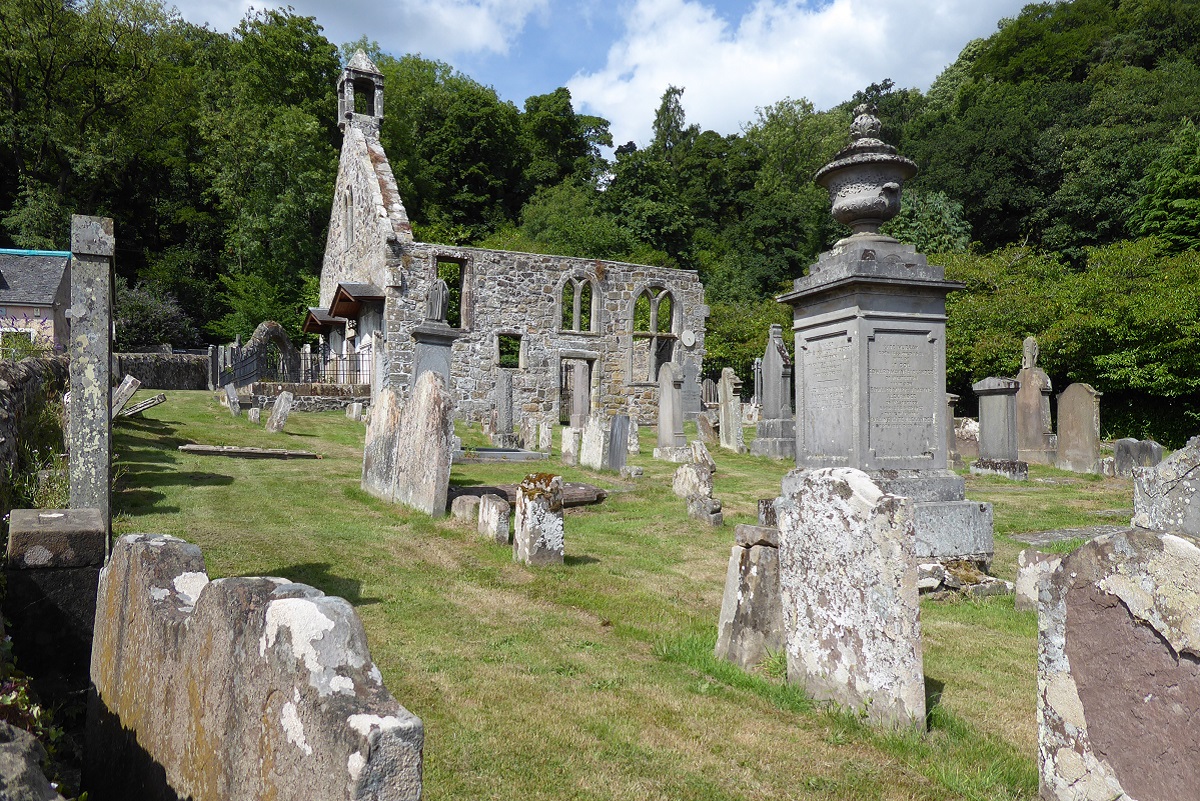
Hidden art
The listed Pathfoot Building is a great place to spend an hour looking at the University’s Art Collection, temporary exhibitions and sculptures. It’s also worth exploring some of Pathfoot’s many corridors where more of the art collection is on display. Please note that these are working corridors so please don’t make too much noise.
Exploring the corridors also gives you a chance to see how Pathfoot’s modernist design makes clever use of the courtyards to draw light into its spaces and offices, as well as displaying some of the Art Collection’s sculpture.
Exploring the woods
The Hermitage Woods are the dramatic woods and steep crags, known as Witches Craig, that overlook the campus to the north. The woods offer a network of paths perfect for you to enjoy a quick lunchtime stroll or take a longer walk up Dumyat, the most westerly of the Ochil Hills.
There are entry points from Hermitage Road and across an old drover’s road once used for driving livestock. Some think that the road may also have been a corpse road which allowed for transporting corpses between remote communities and churches.
As you enter the woods you leave the campus, crossing into something wilder and more untamed. In the spring the woods are carpeted with bluebells, while in autumn they blaze with red, gold and orange. At the top of the crags you’ll be rewarded with stunning views over the University, Stirling Castle, Stirling and the Carse of the Forth.
Explore the woods and you’ll find the slightly mysterious and forgotten remains of the Hermitage, old mossy dry stone dykes, and the occasional roe deer flitting through the trees. Hermitages were built to allow hermits to seek solitude and peace, often for religious purposes, but this one may have been a folly.
Be warned: the paths in the woods can be muddy after rain so you should wear appropriate footwear and clothing. You should also be aware of steep cliffs and that the remains of buildings can be dangerous to explore or approach.
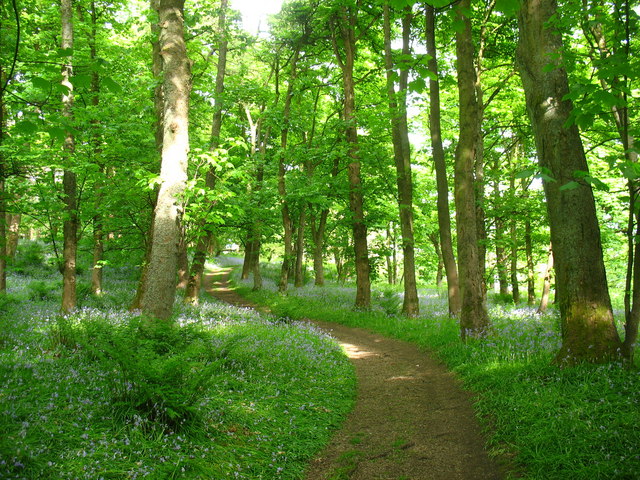
The Arboretum
A small arboretum was established towards the end of the 19th century when the University grounds belonged to the Airthrey Estate. The collection is near the golf clubhouse and includes yews, sycamores and conifers.
If you look carefully you may also find an old icehouse and a small burial plaque dedicated to some pets of the old estate.
The Airthrey Stone, Pathfoot stone and a whale
A large standing stone of dark grey dolerite stands amongst the rugby pitches south of Airthrey Castle. The Airthrey Stone is reputed to commemorate the defeat of the Picts by the Scots in AD 839. Alternative suggestions include a place for gathering and trading.
The Pathfoot Stone stands on an embankment opposite Andrew Stewart Hall. At one point it stood at the centre of the old, now lost village of Pathfoot.
Bizarrely, in 1819, the skeleton of ‘the Airthrey Whale’ was dug up by Sir Robert Abercromby in a field to the east of the eastern porter’s lodge of Airthrey. The seashore had previously run along the base of the Ochil Hills. With the skeleton were found two pieces of stag’s horn, one perforated, obviously a human implement. Sir Robert gifted the skeleton to the Natural History Collection at the University of Edinburgh.

Go to our handy Google map to find all the different locations around campus.
[iframe src=”https://www.google.com/maps/d/embed?mid=18KF-PJuxUnj5XaoIbJjBp3HAgW1cYqQ8″ width=”640″ height=”480″]

